ACCT 420: Logistic Regression
Session 4
Dr. Richard M. Crowley
rcrowley@smu.edu.sg
http://rmc.link/
Front matter
Learning objectives
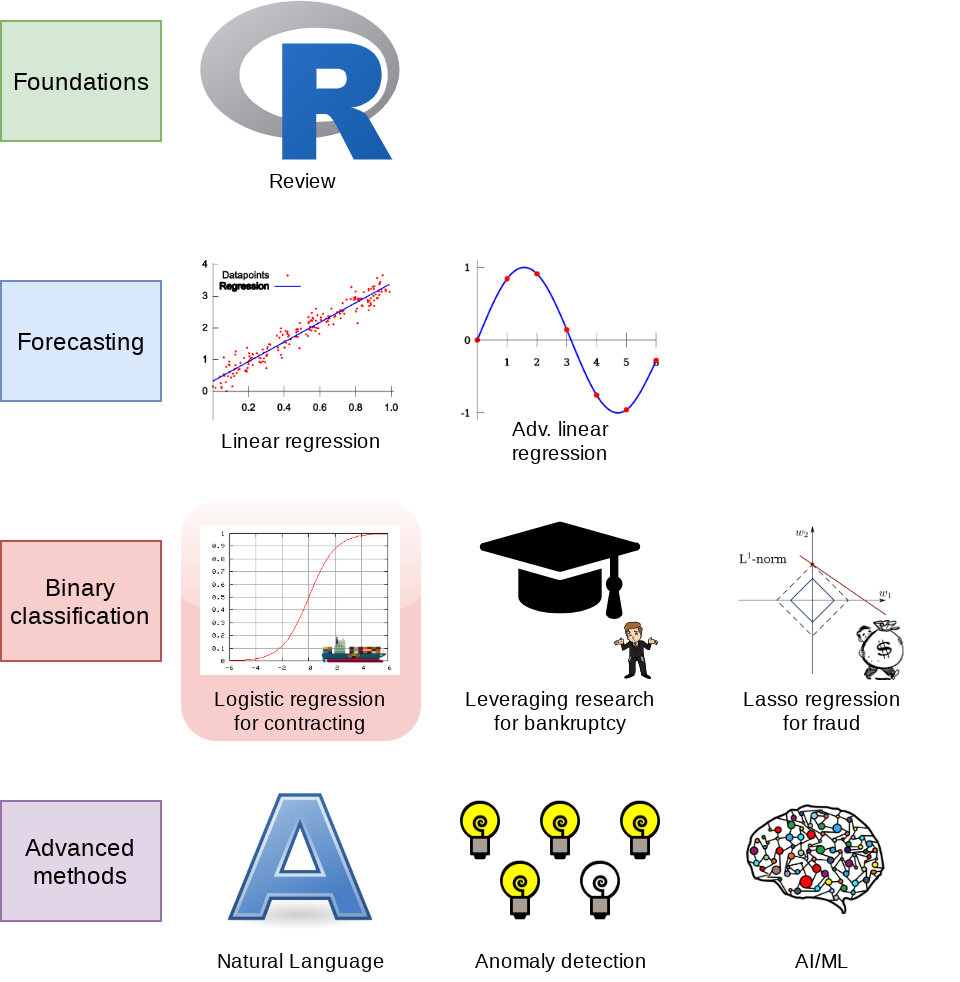
- Theory:
- Understanding binary problems
- Application:
- Detecting shipping delays caused by typhoons
- Methodology:
- Logistic regression
- Spatial visualization
Datacamp
- Explore on your own
- No specific required class this week
Assignment 2
- Looking at Singaporean retail firms
- Mostly focused on time and cyclicality
- Some visualization
- A little of what we cover today
- Optional (but encouraged):
- You can work in pairs on this assignment
- If you choose to do this, please only make 1 submission and include both your names on the submission
- You can work in pairs on this assignment
Binary outcomes
What are binary outcomes?
- Thus far we have talked about events with continuous outcomes
- Revenue: Some positive number
- Earnings: Some number
- ROA: Some percentage
- Binary outcomes only have two possible outcomes
- Did something happen, yes or no?
- Is a statement true or false?
Accounting examples of binary outcomes
- Financial accounting:
- Will the company’s earnings meet analysts’ expectations?
- Will the company have positive earnings?
- Managerial accounting:
- Will we have ___ problem with our supply chain?
- Will our customer go bankrupt?
- Audit:
- Is the company committing fraud?
- Taxation:
- Is the company too aggressive in their tax positions?
We can assign a probability to any of these
Brainstorming…
What types of business problems or outcomes are binary?
Regression approach: Logistic regression
- When modeling a binary outcome, we use logistic regression
- A.k.a. logit model
- The logit function is \(logit(x) = \text{log}\left(\frac{x}{1-x}\right)\)
- Also called log odds
\[ \text{log}\left(\frac{\text{Prob}(y=1|X)}{1-\text{Prob}(y=1|X)}\right)=\alpha + \beta_1 x_1 + \beta_2 x_2 + \ldots + \varepsilon \]
There are other ways to model this though, such as probit
Implementation: Logistic regression
- The logistic model is related to our previous linear models as such:
Both linear and logit models are under the class of General Linear Models (GLMs)
- To regress a GLM, we use the glm() command.
- To run a logit regression:
family=binomialis what sets the model to be a logit
Interpreting logit values
- The sign of the coefficients means the same as before
- +: increases the likelihood of \(y\) occurring
- -: decreases the likelihood of \(y\) occurring
- The level of a coefficient is different
- The relationship isn’t linear between \(x_i\) and \(y\) now
- Instead, coefficients are in log odds
- Thus, \(e^{\beta_i}\) gives you the odds, \(o\)
- You can interpret the odds for a coefficient
- Increased by \([o-1]\%\)
- You need to sum all relevant log odds before converting to a probability!
Odds vs probability
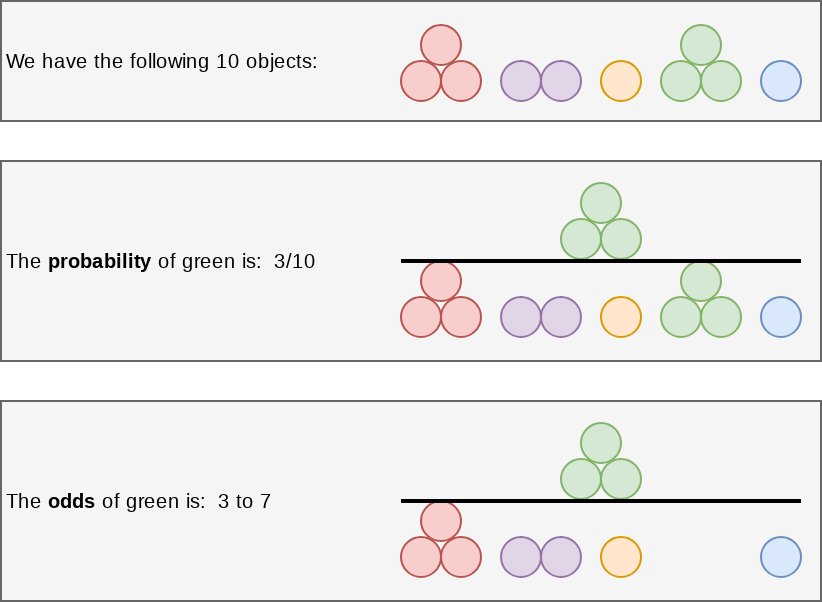
Example logit regression
Do holidays increase the likelihood that a department more than doubles its store’s average weekly sales across departments?
# Create the binary variable from Walmart sales data
df$double <- ifelse(df$Weekly_Sales > df$store_avg*2,1,0)
fit <- glm(double ~ IsHoliday, data=df, family=binomial)
tidy(fit)## # A tibble: 2 x 5
## term estimate std.error statistic p.value
## <chr> <dbl> <dbl> <dbl> <dbl>
## 1 (Intercept) -3.45 0.00924 -373. 0
## 2 IsHolidayTRUE 0.539 0.0278 19.4 1.09e-83Holidays increase the odds… but by how much?
Logistic regression interpretation
A simple interpretation
- The model we just saw the following model:
\[ logodds(Double~sales) = -3.45 + 0.54 IsHoliday \]
- There are two ways to interpret this:
- Coefficient by coefficient
- In total
Interpretting specific coefficients
\[ logodds(Double~sales) = -3.45 + 0.54 IsHoliday \]
- Interpreting specific coefficients is easiest done manually
- Odds for the \(IsHoliday\) coefficient are
exp(0.54) = 1.72- This means that having a holiday modifies the baseline (i.e., non-Holiday) odds by 1.72 to 1
- Where 1 to 1 is considered no change
- Baseline is 0.032 to 1
- This means that having a holiday modifies the baseline (i.e., non-Holiday) odds by 1.72 to 1
## (Intercept) IsHolidayTRUE
## 0.03184725 1.71367497Interpretting in total
- It is important to note that log odds are additive
- So, calculate a new log odd by plugging in values for variables and adding it all up
- Holiday: \(-3.45 + 0.54 * 1 = -2.89\)
- No holiday: \(-3.45 + 0.54 * 0 = -3.45\)
- So, calculate a new log odd by plugging in values for variables and adding it all up
- Then calculate odds and log odds like before
- With holiday:
exp(-2.89) = 0.056 - Without holiday:
exp(-3.45) = 0.032 - Ratio of holiday to without: 1.72!
- This is the individual log odds for holiday
- With holiday:
We need to specify values to calculate log odds in total
Converting to probabilities
- We can calculate a probability at any given point using the log odds
\[ Probability = \frac{odds}{odds + 1} \]
- Probability of double sales…
- With a holiday:
0.056 / (0.056 + 1) = 0.052 - Without a holiday:
0.032 / (0.032 + 1) = 0.031
- With a holiday:
These are easier to interpret, but require specifying values for each model input to calculate
Using predict() to simplify it
- predict() can calculate log odds and probabilities for us with minimal effort
- Specify
type="response"to get probabilities
- Specify
## [1] -3.44 -2.90## [1] 0.03106848 0.05215356- Here, we see the baseline probability is 3.1%
- The probability of doubling sales on a holiday is higher, at 5.2%
R practice: Logit
- A continuation of last week’s practices answering:
- Is Walmart more likely to see a year over year decrease in quarterly revenue during a recession?
- Practice using mutate() and glm()
- Do exercises 1 and 2 in today’s practice file
- R Practice
- Shortlink: rmc.link/420r4
Logistic regression interpretation redux
What about more complex models?
- Continuous inputs in the model
- What values do we pick to determine probabilities?
- Multiple inputs?
- We can scale up what we did, but things get messy
- Mathematically, the inputs get interacted within the inner workings of logit…
- So the impact of each input depends on the values of the others!
- Mathematically, the inputs get interacted within the inner workings of logit…
- We can scale up what we did, but things get messy
Consider this model
model2 <- glm(double ~ IsHoliday + Temperature + Fuel_Price, data=df, family=binomial)
summary(model2)##
## Call:
## glm(formula = double ~ IsHoliday + Temperature + Fuel_Price,
## family = binomial, data = df)
##
## Deviance Residuals:
## Min 1Q Median 3Q Max
## -0.4113 -0.2738 -0.2464 -0.2213 2.8562
##
## Coefficients:
## Estimate Std. Error z value Pr(>|z|)
## (Intercept) -1.7764917 0.0673246 -26.39 <2e-16 ***
## IsHolidayTRUE 0.3704298 0.0284395 13.03 <2e-16 ***
## Temperature -0.0108268 0.0004698 -23.04 <2e-16 ***
## Fuel_Price -0.3091950 0.0196234 -15.76 <2e-16 ***
## ---
## Signif. codes: 0 '***' 0.001 '**' 0.01 '*' 0.05 '.' 0.1 ' ' 1
##
## (Dispersion parameter for binomial family taken to be 1)
##
## Null deviance: 120370 on 421569 degrees of freedom
## Residual deviance: 119146 on 421566 degrees of freedom
## AIC: 119154
##
## Number of Fisher Scoring iterations: 6Odds and probabilities
## (Intercept) IsHolidayTRUE Temperature Fuel_Price
## 0.1692308 1.4483570 0.9892316 0.7340376# Typical September days
hday_sep <- mean(predict(model2, filter(df, IsHoliday, month==9), type="response"))
no_hday_sep <- mean(predict(model2, filter(df, !IsHoliday, month==9), type="response"))
# Typical December days
hday_dec <- mean(predict(model2, filter(df, IsHoliday, month==12), type="response"))
no_hday_dec <- mean(predict(model2, filter(df, !IsHoliday, month==12), type="response"))
html_df(data.frame(Month=c(9,9,12,12),
IsHoliday=c(FALSE,TRUE,FALSE,TRUE),
Probability=c(no_hday_sep, hday_sep, no_hday_dec, hday_dec)))| Month | IsHoliday | Probability |
|---|---|---|
| 9 | FALSE | 0.0266789 |
| 9 | TRUE | 0.0374761 |
| 12 | FALSE | 0.0398377 |
| 12 | TRUE | 0.0586483 |
A bit easier: Marginal effects
Marginal effects tell us the average change in our output for a change of 1 to an input
- The above definition is very similar to how we interpret linear regression coefficients
- The only difference is the word average – the effect changes a bit depending on the input data
- Using margins, we can calculate marginal effects
- There are a few types that we could calculate:
- An Average Marginal Effect tells us what the average effect of an input is across all values in our data
- This is the default method in the package
- We can also specify a specific value to calculate marginal effects at (like with our probabilities last slides)
- An Average Marginal Effect tells us what the average effect of an input is across all values in our data
Marginal effects in action
## Temperature Fuel_Price IsHoliday
## -0.0003377 -0.009644 0.01334- A holiday increase the probability of doubling by a flat 1.33%
- Not too bad when you consider that the probability of doubling is 3.23%
- If the temperature goes up by 1°F (0.55°C), the probability of doubling changes by -0.03%
- If the fuel price increases by 1 USD for 1 gallon of gas, the probability of doubling changes by -0.96%
margins niceties
- We can get some extra information about our marginal effects through summary():
| factor | AME | SE | z | p | lower | upper |
|---|---|---|---|---|---|---|
| Fuel_Price | -0.0096438 | 0.0006163 | -15.64800 | 0 | -0.0108517 | -0.0084359 |
| IsHoliday | 0.0133450 | 0.0011754 | 11.35372 | 0 | 0.0110413 | 0.0156487 |
| Temperature | -0.0003377 | 0.0000149 | -22.71255 | 0 | -0.0003668 | -0.0003085 |
- Those p-values work just like with our linear models
- We also get a confidence interval
- Which we can plot!
Plotting marginal effects

Note: The
which...part is absolutely necessary at the moment due to a bug in the package
Marginal effects at a specified value
margins(model2, at = list(IsHoliday = c(TRUE, FALSE)),
variables = c("Temperature", "Fuel_Price")) %>%
summary() %>%
html_df()| factor | IsHoliday | AME | SE | z | p | lower | upper |
|---|---|---|---|---|---|---|---|
| Fuel_Price | FALSE | -0.0093401 | 0.0005989 | -15.59617 | 0 | -0.0105139 | -0.0081664 |
| Fuel_Price | TRUE | -0.0131335 | 0.0008717 | -15.06650 | 0 | -0.0148420 | -0.0114250 |
| Temperature | FALSE | -0.0003271 | 0.0000146 | -22.46024 | 0 | -0.0003556 | -0.0002985 |
| Temperature | TRUE | -0.0004599 | 0.0000210 | -21.92927 | 0 | -0.0005010 | -0.0004188 |
margins(model2, at = list(Temperature = c(0, 25, 50, 75, 100)),
variables = c("IsHoliday")) %>%
summary() %>%
html_df()| factor | Temperature | AME | SE | z | p | lower | upper |
|---|---|---|---|---|---|---|---|
| IsHoliday | 0 | 0.0234484 | 0.0020168 | 11.62643 | 0 | 0.0194955 | 0.0274012 |
| IsHoliday | 25 | 0.0184956 | 0.0015949 | 11.59704 | 0 | 0.0153697 | 0.0216214 |
| IsHoliday | 50 | 0.0144798 | 0.0012679 | 11.42060 | 0 | 0.0119948 | 0.0169648 |
| IsHoliday | 75 | 0.0112693 | 0.0010161 | 11.09035 | 0 | 0.0092777 | 0.0132609 |
| IsHoliday | 100 | 0.0087305 | 0.0008213 | 10.62977 | 0 | 0.0071207 | 0.0103402 |
Today’s Application: Shipping delays
The question
Can we leverage global weather data to predict shipping delays?

Formalization
- Question
- How can predict naval shipping delays?
- Hypothesis (just the alternative ones)
- Global weather data helps to predict shipping delays
- Prediction
- Use Logistic regression and \(z\)-tests for coefficients
- No hold out sample this week – too little data
A bit about shipping data
- WRDS doesn’t have shipping data
- There are, however, vendors for shipping data, such as:
- They pretty much have any data you could need:
- Over 650,000 ships tracked using ground and satellite based AIS
- AIS: Automatic Identification System
- Live mapping
- Weather data
- Fleet tracking
- Port congestion
- Inmarsat support for ship operators
- Over 650,000 ships tracked using ground and satellite based AIS
What can we see from naval data?
Yachts in the Mediterranean
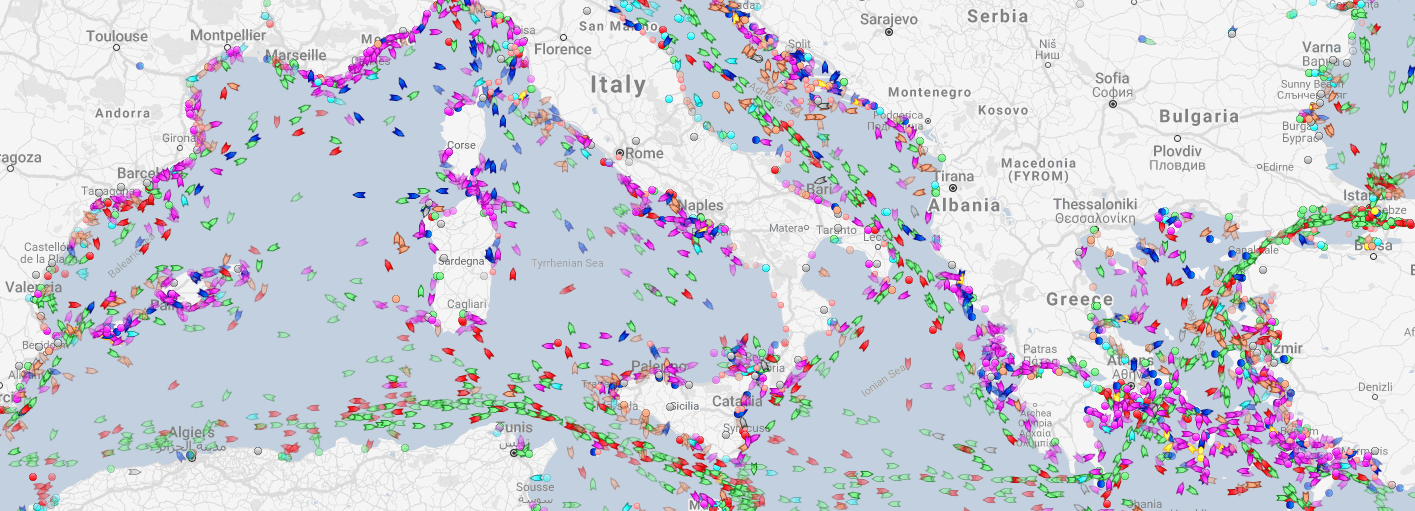
Oil tankers in the Persian gulf
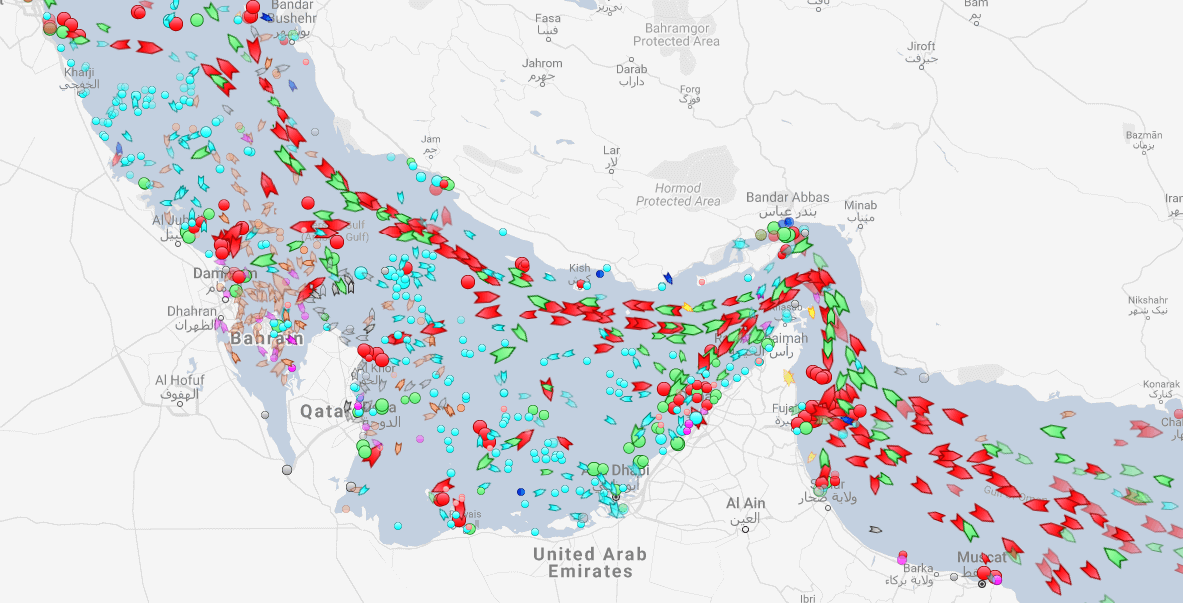
What can we see from naval data?
Shipping route via the Panama canal
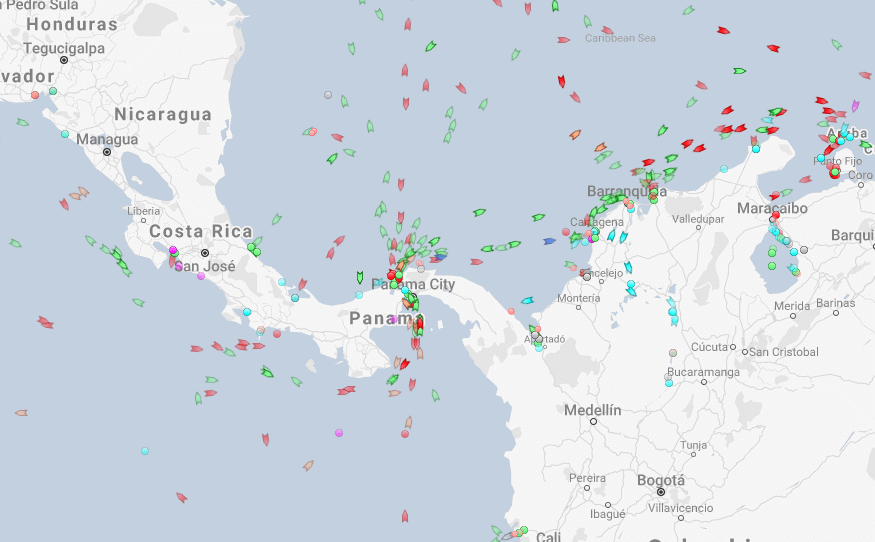
River shipping on the Mississippi river, USA
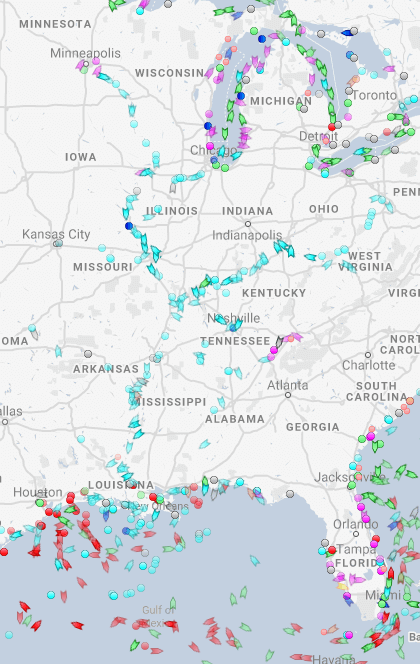
What can we see from naval data?
Busiest ports by containers and tons (Shanghai & Ningbo-Zhoushan, China) 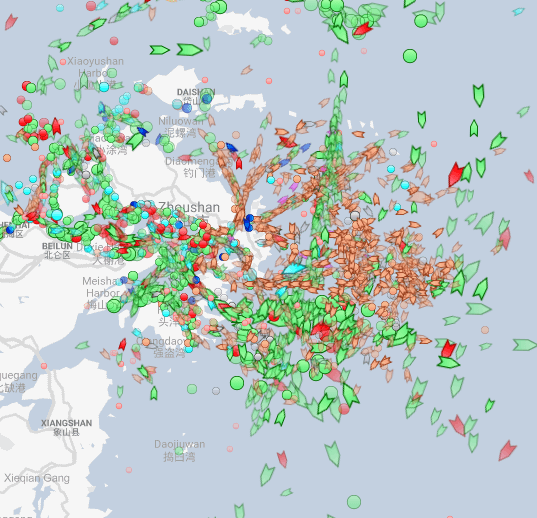
Busiest port for transshipment (Singapore)
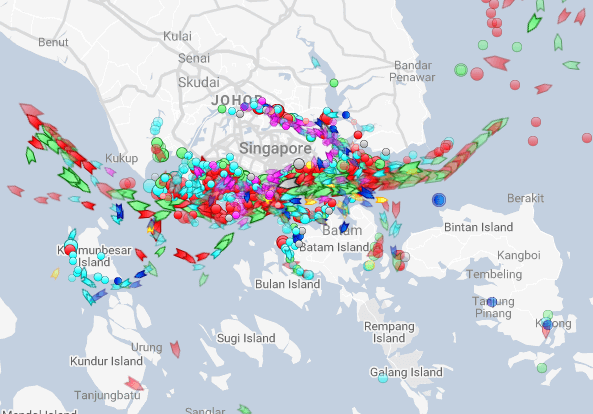
Examining Singaporean owned ships
Code for last slide’s map
library(plotly) # for plotting
library(RColorBrewer) # for colors
# plot with boats, ports, and typhoons
# Note: geo is defined in the appendix -- it controls layout
palette = brewer.pal(8, "Dark2")[c(1,8,3,2)]
p <- plot_geo(colors=palette) %>%
add_markers(data=df_ports, x = ~port_lon, y = ~port_lat, color = "Port") %>%
add_markers(data=df_Aug31, x = ~lon, y = ~lat, color = ~ship_type,
text=~paste('Ship name',shipname)) %>%
add_markers(data=typhoon_Aug31, x = ~lon, y = ~lat, color="TYPHOON",
text=~paste("Name", typhoon_name)) %>%
layout(showlegend = TRUE, geo = geo,
title = 'Singaporean owned container and tanker ships, August 31, 2018')
p- plot_geo() is from plotly
- add_markers() adds points to the map
- layout() adjusts the layout
- Within geo, a list, the following makes the map a globe
projection=list(type="orthographic")
Singaporean ship movement
Code for last slide’s map
library(sf) # Note: very difficult to install except on Windows
library(maps)
# Requires separately installing "maptools" and "rgeos" as well
# This graph requires ~7GB of RAM to render
world1 <- sf::st_as_sf(map('world', plot = FALSE, fill = TRUE))
df_all <- df_all %>% arrange(run, imo)
p <- ggplot(data = world1) +
geom_sf() +
geom_point(data = df_all, aes(x = lon, y = lat, frame=frame,
text=paste("name:",shipname)))
ggplotly(p) %>%
animation_opts(
1000, easing = "linear", redraw = FALSE)world1contains the map data- geom_sf() plots map data passed to ggplot()
- geom_point() plots ship locations as longitude and latitude
- ggplotly() converts the graph to html and animates it
- Animation follows the
frameaesthetic
- Animation follows the
What might matter for shipping? {data-background=“../Backgrounds/group.jpg” class=“default present-not”}+
What observable events or data might provide insight as to whether a naval shipment will be delayed or not?
Typhoon Jebi
Typhoons in the data
Code for last slide’s map
# plot with boats and typhoons
palette = brewer.pal(8, "Dark2")[c(1,3,2)]
p <- plot_geo(colors=palette) %>%
add_markers(data=df_all[df_all$frame == 14,], x = ~lon, y = ~lat,
color = ~ship_type, text=~paste('Ship name',shipname)) %>%
add_markers(data=typhoon_Jebi, x = ~lon,
y = ~lat, color="Typhoon Jebi",
text=~paste("Name", typhoon_name, "</br>Time: ", date)) %>%
layout(showlegend = TRUE, geo = geo,
title = 'Singaporean container/tanker ships, September 4, 2018, evening')
p- This map is made the same way as the first map
Typhoons in the data using leaflet
Code for last slide’s map
library(leaflet)
library(leaflet.extras)
# typhoon icons
icons <- pulseIcons(color='red',
heartbeat = ifelse(typhoon_Jebi$intensity_vmax > 150/1.852, 0.8,
ifelse(typhoon$intensity_vmax < 118/1.852, 1.6, 1.2)),
iconSize=ifelse(typhoon_Jebi$intensity_vmax > 150/1.852, 5,
ifelse(typhoon_Jebi$intensity_vmax < 118/1.852, 2, 3)))
# ship icons
shipicons <- iconList(
ship = makeIcon("../Figures/ship.png", NULL, 18, 18)
)
leaflet() %>%
addTiles() %>%
setView(lng = 136, lat = 34, zoom=4) %>%
addPulseMarkers(data=typhoon_Jebi[seq(1,nrow(typhoon_Jebi),5),], lng=~lon,
lat=~lat, label=~date, icon=icons) %>%
addCircleMarkers(data=typhoon_Jebi[typhoon_Jebi$intensity_vmax > 150/1.852,],
lng=~lon, lat=~lat,stroke = TRUE, radius=3, color="red", label=~date) %>%
addCircleMarkers(data=typhoon_Jebi[typhoon_Jebi$intensity_vmax <= 150/1.852 &
typhoon_Jebi$intensity_vmax > 118/1.852,], lng=~lon, lat=~lat,
stroke = TRUE, radius=2, color="red", label=~date) %>%
addCircleMarkers(data=typhoon_Jebi[typhoon_Jebi$intensity_vmax <=118/1.852,],
lng=~lon, lat=~lat, stroke = TRUE, radius=1, color="red", label=~date) %>%
addMarkers(data=df_all[df_all$frame == 14,], lng=~lon, lat=~lat,
label=~shipname, icon=shipicons)- pulseIcons(): pulsing icons from leaflet.extras
- iconList(): pulls icons stored on your computer
- leaflet(): start the map; addTiles() pulls from OpenStreetMap
- setView(): sets the frame for the map
- addPulseMarkers(): adds pulsing markers
- addCircleMarkers(): adds circular markers
R Practice on mapping
- Practice mapping typhoon data
- Practice using plotly and leaflet
- Do exercises 3 and 4 in today’s practice file
- R Practice
- Shortlink: rmc.link/420r4
Predicting delays due to typhoons
Data
- If the ship will report a delay of at least 3 hours some time in the next 12-24 hours
- What we have:
- Ship location
- Typhoon location
- Typhoon wind speed
We need to calculate distance between ships and typhoons
Distance for geo
- There are a number of formulas for this
- Haversine for a simple calculation
- Vincenty’s formulae for a complex, incredibly accurate calculation
- Accurate within 0.5mm
- Use distVincentyEllipsoid() from geosphere to get a reasonably quick and accurate calculation
- Calculates distance between two sets of points, x and y, structured as matrices
- Matrices must have longitude in the first column and latitude in the second column
- Provides distance in meters by default
Clean up
- Some indicators to cleanly capture how far away the typhoon is
df3$typhoon_500 = ifelse(df3$dist_typhoon < 500 &
df3$dist_typhoon >= 0, 1, 0)
df3$typhoon_1000 = ifelse(df3$dist_typhoon < 1000 &
df3$dist_typhoon >= 500, 1, 0)
df3$typhoon_2000 = ifelse(df3$dist_typhoon < 2000 &
df3$dist_typhoon >= 1000, 1, 0)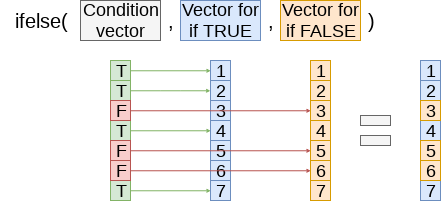
Do typhoons delay shipments?
fit1 <- glm(delayed ~ typhoon_500 + typhoon_1000 + typhoon_2000, data=df3,
family=binomial)
summary(fit1)##
## Call:
## glm(formula = delayed ~ typhoon_500 + typhoon_1000 + typhoon_2000,
## family = binomial, data = df3)
##
## Deviance Residuals:
## Min 1Q Median 3Q Max
## -0.2502 -0.2261 -0.2261 -0.2261 2.7127
##
## Coefficients:
## Estimate Std. Error z value Pr(>|z|)
## (Intercept) -3.65377 0.02934 -124.547 <2e-16 ***
## typhoon_500 0.14073 0.16311 0.863 0.3883
## typhoon_1000 0.20539 0.12575 1.633 0.1024
## typhoon_2000 0.16059 0.07106 2.260 0.0238 *
## ---
## Signif. codes: 0 '***' 0.001 '**' 0.01 '*' 0.05 '.' 0.1 ' ' 1
##
## (Dispersion parameter for binomial family taken to be 1)
##
## Null deviance: 14329 on 59184 degrees of freedom
## Residual deviance: 14322 on 59181 degrees of freedom
## (3866 observations deleted due to missingness)
## AIC: 14330
##
## Number of Fisher Scoring iterations: 6It appears so!
Interpretation of coefficients
## (Intercept) typhoon_500 typhoon_1000 typhoon_2000
## 0.02589334 1.15111673 1.22800815 1.17420736- Ships 1,000 to 2,000 km from a typhoon have a 17% increased odds of having a delay
## factor AME SE z p lower upper
## typhoon_1000 0.0052 0.0032 1.6322 0.1026 -0.0010 0.0115
## typhoon_2000 0.0041 0.0018 2.2570 0.0240 0.0005 0.0076
## typhoon_500 0.0036 0.0042 0.8626 0.3883 -0.0046 0.0117- Ships 1,000 to 2,000 km from a typhoon have an extra 0.41% chance of having a delay (baseline of 2.61%)
What about typhoon intensity?
- Hong Kong’s typhoon classification: Official source
- 41-62 km/h: Tropical depression
- 63-87 km/h: Tropical storm
- 88-117 km/h: Severe tropical storm
- 118-149 km/h: Typhoon
- 150-184 km/h: Severe typhoon
- 185+km/h: Super typhoon
# Cut makes a categorical variable out of a numerical variable using specified bins
df3$Super <- ifelse(df3$intensity_vmax * 1.852 > 185, 1, 0)
df3$Moderate <- ifelse(df3$intensity_vmax * 1.852 >= 88 &
df3$intensity_vmax * 1.852 < 185, 1, 0)
df3$Weak <- ifelse(df3$intensity_vmax * 1.852 >= 41 &
df3$intensity_vmax * 1.852 < 88, 1, 0)
df3$HK_intensity <- cut(df3$intensity_vmax * 1.852 ,c(-1,41, 62, 87, 117, 149, 999))
table(df3$HK_intensity)##
## (-1,41] (41,62] (62,87] (87,117] (117,149] (149,999]
## 3398 12039 12615 11527 2255 21141Typhoon intensity and delays
fit2 <- glm(delayed ~ (typhoon_500 + typhoon_1000 + typhoon_2000) :
(Weak + Moderate + Super), data=df3,
family=binomial)
tidy(fit2)## # A tibble: 10 x 5
## term estimate std.error statistic p.value
## <chr> <dbl> <dbl> <dbl> <dbl>
## 1 (Intercept) -3.65 0.0290 -126. 0
## 2 typhoon_500:Weak -0.00879 0.213 -0.0413 0.967
## 3 typhoon_500:Moderate 0.715 0.251 2.86 0.00430
## 4 typhoon_500:Super -8.91 123. -0.0726 0.942
## 5 typhoon_1000:Weak 0.250 0.161 1.55 0.121
## 6 typhoon_1000:Moderate 0.123 0.273 0.451 0.652
## 7 typhoon_1000:Super -0.0269 0.414 -0.0648 0.948
## 8 typhoon_2000:Weak 0.182 0.101 1.80 0.0723
## 9 typhoon_2000:Moderate 0.0253 0.134 0.189 0.850
## 10 typhoon_2000:Super 0.311 0.136 2.29 0.0217Moderate storms predict delays when within 500km
Super typhoons predict delays when 1,000 to 2,000km away
Interpretation of coefficients
| factor | AME | SE | z | p | lower | upper |
|---|---|---|---|---|---|---|
| Moderate | 0.0007378 | 0.0006713 | 1.0990530 | 0.2717449 | -0.0005779 | 0.0020535 |
| Super | -0.0050241 | 0.0860163 | -0.0584087 | 0.9534231 | -0.1736129 | 0.1635647 |
| typhoon_1000 | 0.0035473 | 0.0036186 | 0.9802921 | 0.3269420 | -0.0035450 | 0.0106396 |
| typhoon_2000 | 0.0039224 | 0.0017841 | 2.1985908 | 0.0279070 | 0.0004257 | 0.0074191 |
| typhoon_500 | -0.0440484 | 0.6803640 | -0.0647424 | 0.9483791 | -1.3775373 | 1.2894405 |
| Weak | 0.0009975 | 0.0005154 | 1.9353011 | 0.0529534 | -0.0000127 | 0.0020077 |
- Delays appear to be driven mostly by 2 factors:
- A typhoon 1,000 to 2,000 km away from the ship
- Weak typhoons
Interpretating interactions
| factor | Weak | AME | SE | z | p | lower | upper |
|---|---|---|---|---|---|---|---|
| typhoon_1000 | 1 | 0.0073057 | 0.0053682 | 1.360938 | 0.1735332 | -0.0032157 | 0.0178271 |
| typhoon_2000 | 1 | 0.0067051 | 0.0031225 | 2.147328 | 0.0317671 | 0.0005850 | 0.0128251 |
| typhoon_500 | 1 | -0.0458116 | 0.7052501 | -0.064958 | 0.9482075 | -1.4280764 | 1.3364531 |
| factor | Moderate | AME | SE | z | p | lower | upper |
|---|---|---|---|---|---|---|---|
| typhoon_1000 | 1 | 0.0059332 | 0.0078245 | 0.7582856 | 0.4482800 | -0.0094025 | 0.0212688 |
| typhoon_2000 | 1 | 0.0044871 | 0.0039453 | 1.1373050 | 0.2554108 | -0.0032457 | 0.0122198 |
| typhoon_500 | 1 | -0.0311946 | 0.6847130 | -0.0455586 | 0.9636620 | -1.3732074 | 1.3108182 |
| factor | Super | AME | SE | z | p | lower | upper |
|---|---|---|---|---|---|---|---|
| typhoon_1000 | 1 | 0.0030638 | 0.0111295 | 0.2752891 | 0.7830941 | -0.0187495 | 0.0248772 |
| typhoon_2000 | 1 | 0.0102513 | 0.0041568 | 2.4661549 | 0.0136572 | 0.0021041 | 0.0183985 |
| typhoon_500 | 1 | -0.2241250 | 3.1608062 | -0.0709076 | 0.9434713 | -6.4191913 | 5.9709413 |
What might matter for shipping?
What other observable events or data might provide insight as to whether a naval shipment will be delayed or not?
- What is the reason that this event or data would be useful in predicting delays?
- I.e., how does it fit into your mental model?
End matter
For next week
- For next week:
- Second individual assignment
- Finish by 2 classes from now
- Submit on eLearn
- Think about who you want to work with for the project
- Second individual assignment
Packages used for these slides
Custom code
# styling for plotly maps
geo <- list(
showland = TRUE,
showlakes = TRUE,
showcountries = TRUE,
showocean = TRUE,
countrywidth = 0.5,
landcolor = toRGB("grey90"),
lakecolor = toRGB("aliceblue"),
oceancolor = toRGB("aliceblue"),
projection = list(
type = 'orthographic', # detailed at https://plot.ly/r/reference/#layout-geo-projection
rotation = list(
lon = 100,
lat = 1,
roll = 0
)
),
lonaxis = list(
showgrid = TRUE,
gridcolor = toRGB("gray40"),
gridwidth = 0.5
),
lataxis = list(
showgrid = TRUE,
gridcolor = toRGB("gray40"),
gridwidth = 0.5
)
)